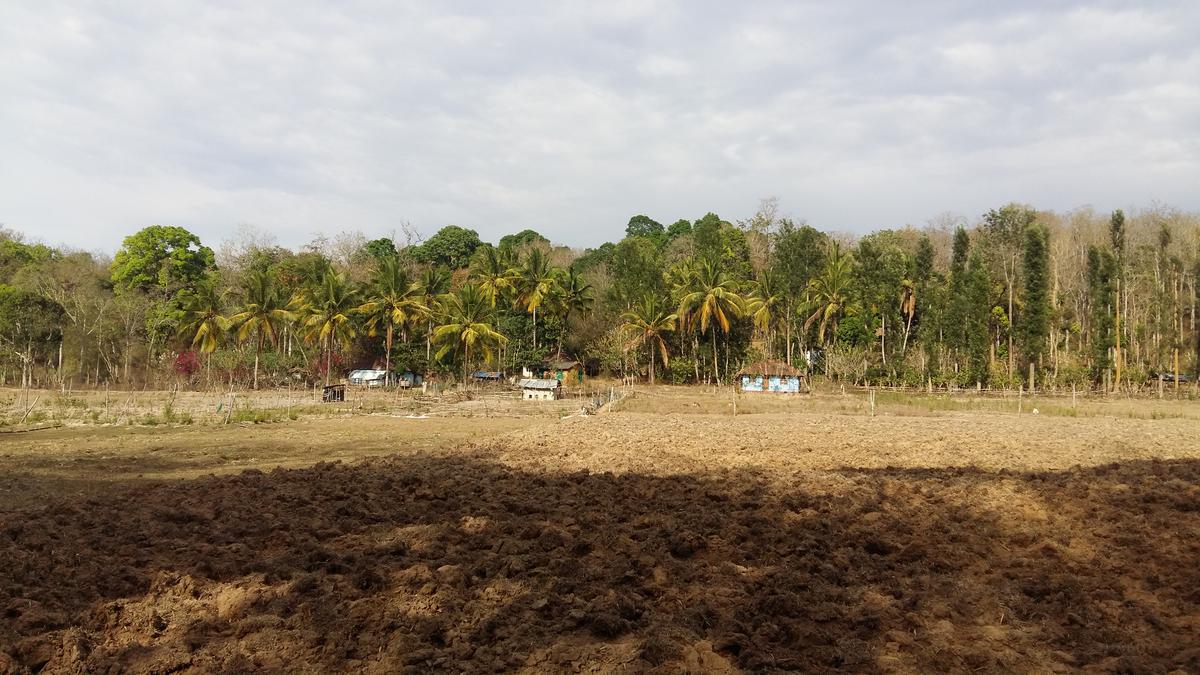
Of false promises and revised timelines Premium
The Hindu
In 2011, when the Union govt. came up with a proposal to relocate residents of 110 forest hamlets in the Wayanad Wildlife Sanctuary, there were many takers, since they had for long been at the receiving end of wildlife attacks. However, the project has come to a halt because of fund shortage and official apathy. Now, the residents can neither move out nor fortify their dwellings as all development work inside forest region is barred.
A trip to the Chettyalathur tribal colony would mean leaving almost everything to chance. Even if you go during the day, when the weather is clear, in a four-wheel-drive cab from Cheeral, the last village with a taxi point, about 10 kilometres away, there could still be herds of wild elephants along the final stretch of the 3-km gravel road to the colony.
That’s how life has been for the settlers of Chettyalathur, a hamlet that straddles the trijunction of Kerala’s Wayanad Wildlife Sanctuary, Tamil Nadu’s Mudumalai Tiger Reserve, and Karnataka’s Bandipur Tiger Reserve.
“We have been living in the settlement for many generations, but frequent attacks by wild animals are forcing us to leave,” bemoans Ramesh, 44, a farmer at Chettyalathur, the largest of the 110 forest settlements in the wildlife sanctuary.
Crop raids by wild animals have become so common that the residents of Chettyalathur were forced to restrict cultivation of rice to just about 10 acres from nearly 45 acres two years ago. But that’s just one aspect of their misery. The only primary school in the settlement, thatched with asbestos sheets, failed to receive a fitness certificate from the Noolpuzha grama panchayat and is heading for closure, rues Venugopal Chettiyar, another resident of the colony. The settlers say that the school was set up in 1975 after two children were trampled upon by wild elephants while they were returning from their school at Pattavayal located 10 km away in Tamil Nadu.
In 2011, the Union Ministry of Forest Environment and Climate Change (MoEFCC) launched a project that would allow forest settlers to relocate to areas of their choice outside. With 101 of the 186 families of Chettyalathur choosing to move out, the student strength of the government primary school fell from 70 to just about 11. Ramesh says he has enrolled his children at a school in Cheeral, and their daily commute is a private vehicle hired for the purpose.
While the voluntary relocation project was directly under MoEFCC’s Integrated Development of Wildlife Habitat Scheme, in 2020, a new scheme was worked out based on which the Centre and the State would share the cost of relocation on a 60:40 basis.
Hassled by frequent encounters with the wild, settlers welcomed the scheme with enthusiasm, but official apathy and lack of funds stopped the project in its tracks and the first phase of relocation is dragging on. A study conducted in 2010 under the supervision of S. Sankar, scientist at the Kerala Forest Research Institute, Peechi, had identified 1,388 people belonging to 880 families across 14 settlements inside the sanctuary for relocation in the first phase. It was to be done at an estimated cost of ₹80 crore. The study had identified 2,613 families from the 110 settlements inside the sanctuary for shifting out.

After Leader of the Opposition in the Assembly R. Ashok’s prediction on Saturday that Chief Minister Siddaramaiah will step down in November 2025 triggered intense political discussions in the State, Home Minister G. Parameshwara on Sunday said Mr. Siddaramaiah will continue for the full five-year term.

 Run 3 Space | Play Space Running Game
Run 3 Space | Play Space Running Game
 Traffic Jam 3D | Online Racing Game
Traffic Jam 3D | Online Racing Game
 Duck Hunt | Play Old Classic Game
Duck Hunt | Play Old Classic Game
















